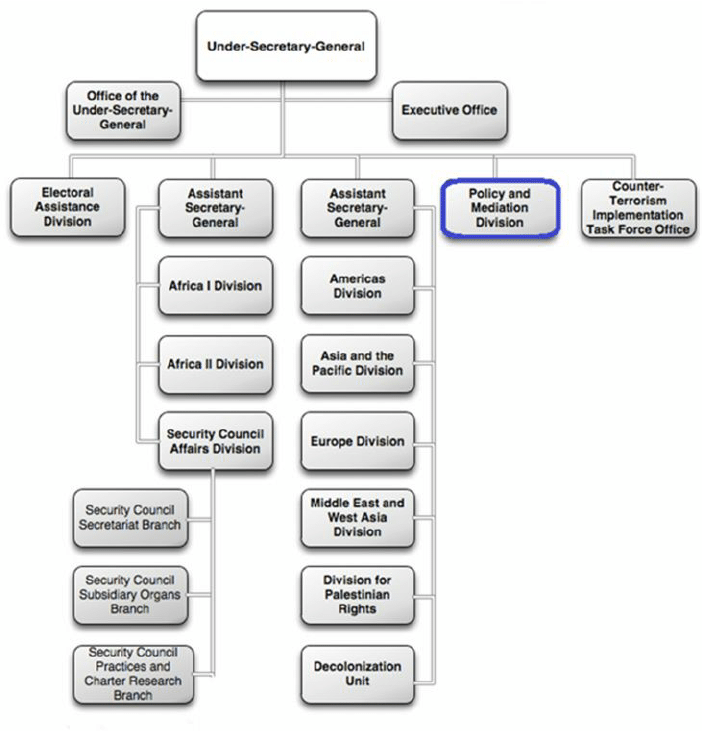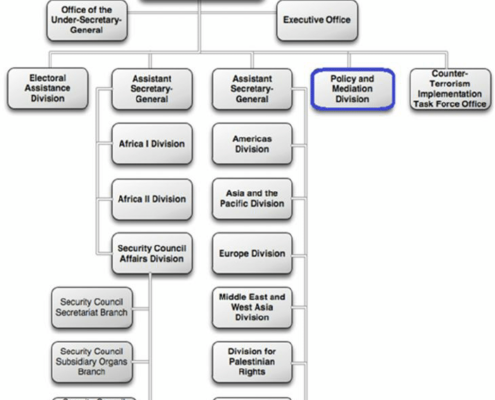Structure
The UN system is based on five principal organs: the General Assembly, the Security Council, the Economic and Social Council (ECOSOC), the International Court of Justice and the UN Secretariat.[75] A sixth principal organ, the Trusteeship Council, suspended operations on 1 November 1994, upon the independence of Palau, the last remaining UN trustee territory.
Four of the five principal organs are located at the main UN Headquarters in New York City.[77] The International Court of Justice is located in The Hague, while other major agencies are based in the UN offices a Geneva, Vienna, and Nairobi.
Other UN institutions are located throughout the world. The six official languages of the UN, used in intergovernmental meetings and documents, are Arabic, Chinese, English, French, Russian, and Spanish. On the basis of the Convention on the Privileges and Immunities of the United Nations, the UN and its agencies are immune from the laws of the countries where they operate, safeguarding the UN’s impartiality with regard to the host and member countries.
Below the six organs sit, in the words of the author Linda Fasulo, “an amazing collection of entities and organizations, some of which are actually older than the UN itself and operate with almost complete independence from it”.[83] These include specialized agencies, research, and training institutions, programs and funds, and other UN entities.
The UN obeys the Noblemaire principle, which is binding on any organization that belongs to the UN system. This principle calls for salaries that will draw and keep citizens of countries where salaries are highest, and also calls for equal pay for work of equal value independent of the employee’s nationality.[85][86] In practice, the ICSC takes reference to the highest-paying national civil service.[87] Staff salaries are subject to an internal tax that is administered by the UN organizations.[85][88]


